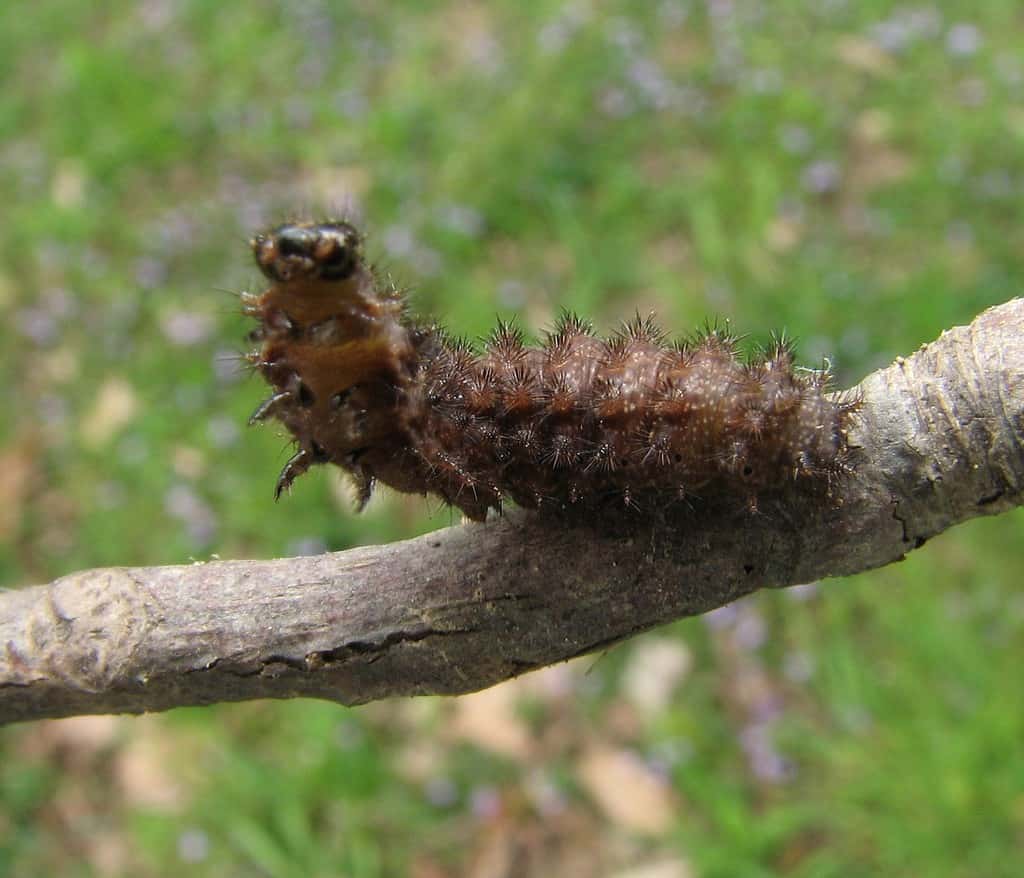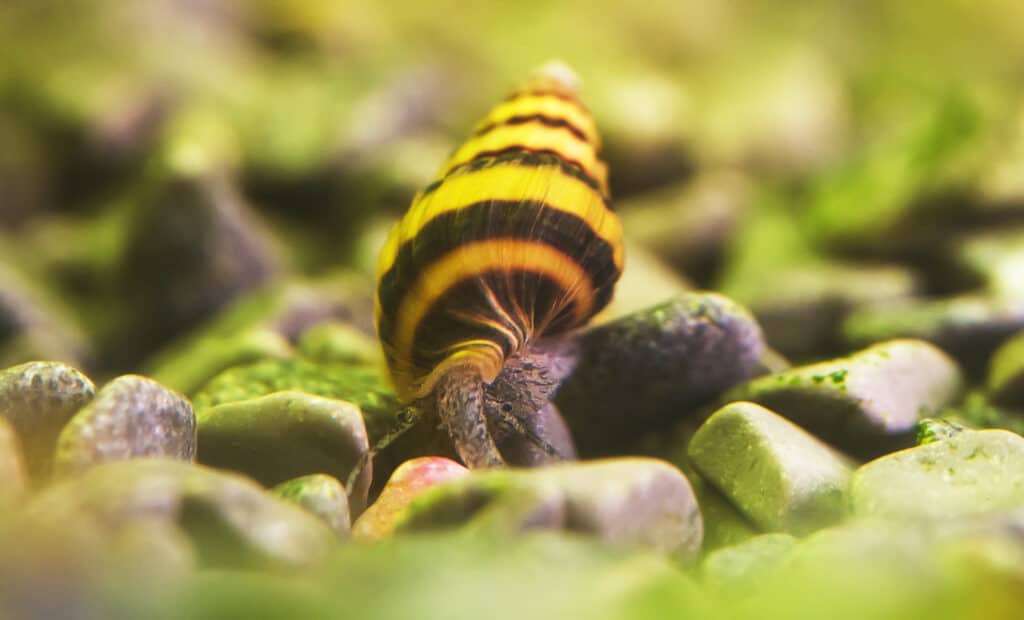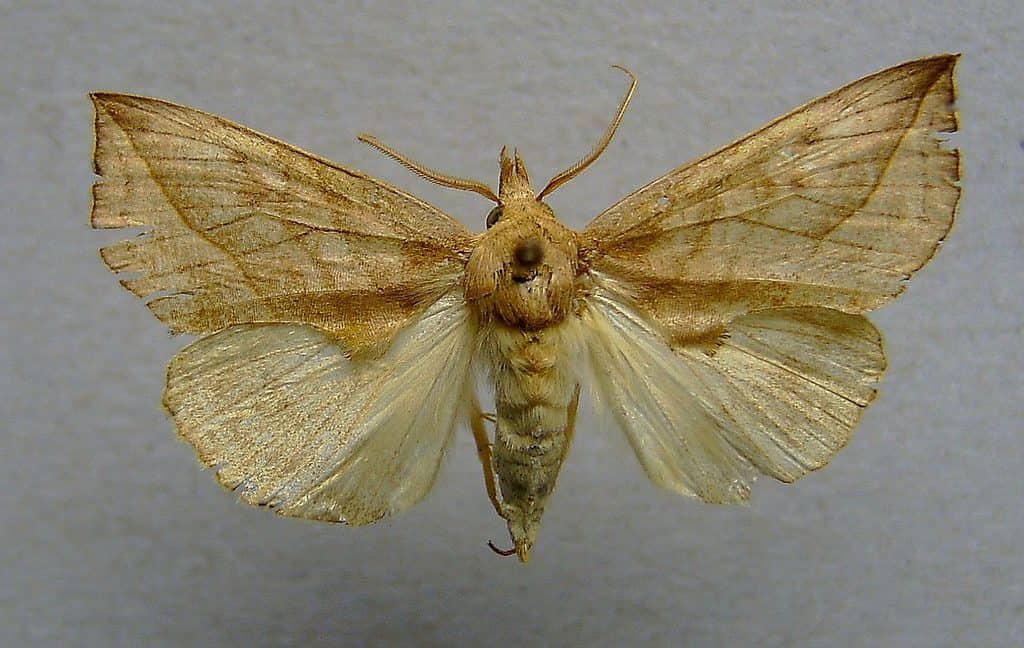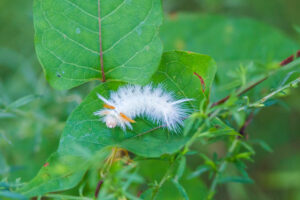Caterpillars. Cute little plant-eating insects that turn into beautiful butterflies, right? Well, not all the time. There is a sinister side to these little creatures that most people don’t know about! Today, we’re going to take a look at some of the most interesting animals around; carnivorous caterpillars. Let’s learn about the methods these carnivorous caterpillars use to hunt, plus what makes them special.
What is a Carnivorous Caterpillar?

Rare species of caterpillars are known to be carnivorous!
A carnivorous caterpillar is a type of caterpillar that exclusively eats animals, although this usually means other insects and spiders. Technically, this would make them insectivores under the larger umbrella of carnivores.
Carnivorous caterpillars are very rare in the world, and most of them belong to a large group (genus) of moths called Eupithecia. Eupithecia are especially adapted for a predatory lifestyle, and their anatomy comes straight out of a horror movie. Some of their special features include sharp grabbing legs, mandibles, and in some cases, even venom glands.
Carnivorous caterpillars mostly live in the islands of Hawaii. This little evolutionary phenomenon happens quite often when there is isolation. The creatures living on the island have lots of time to evolve and specialize in relative isolation for millions of years.
How Do Carnivorous Caterpillars Hunt?

A species of caterpillar from Hawaii hunts snails by trapping them with silk webs.
©iStock.com/M-Production
Very few species of caterpillars are actually carnivorous. Let’s take a look at a few of the most interesting examples and see their unique adaptations for hunting!
The harvester butterfly (Feniseca tarquinius) is the only butterfly species in North America that has a carnivorous caterpillar. It mostly feeds on aphids and woolly alder aphids, a small insect that lives in colonies on alder trees. As they are larvae, the caterpillars pierce and suck the fluids of their prey, sort of similar to how a spider would eat the liquified insides of an insect!
Moving to moths, the pearly-winged lichen moth (Crambidia casta) is the only moth species in North America that has a carnivorous caterpillar. These small caterpillars mostly feed on lichens, mosses, and algae but also on small insects and spiders that they encounter.
As we’ve already mentioned, the genus of Eupithecia moths contains a species of predatory caterpillar in Hawaii (Eupithecia orichloris). These moths have a pair of spiny legs that they use to grab prey. They are known to eat things like spiders, ants, and even other caterpillars.
Maybe the most interesting of all carnivorous caterpillars is the Hyposocoma genus. This group of moths has about 20 species of predatory caterpillars in Hawaii. Incredibly, these snails have evolved the ability to spin silky webs in order to trap snails and other mollusks! Even more, three species of these caterpillars have evolved to become amphibious and can live both in and outside of water sources. Since snails live in both places, it makes sense!
Do Carnivorous Caterpillars Mean Carnivorous Butterflies?

A bite from a vampire moth can cause redness and soreness, but it doesn’t cause any harm.
Carnivorous caterpillars are rare, but carnivorous butterflies and moths are even rarer. Most of the predatory caterpillars change their diet when they become adults and feed on nectar, sap, or fruit juice. That being said, there are a few exceptions that remain carnivorous even after metamorphosis!
One of them is the harvester butterfly, one of the examples we covered earlier. Even after it hatches from its cocoon, it feeds on aphids. The butterfly uses its sharp proboscis (a tongue usually used to suck nectar) to suck the fluids out of the aphids it relied on as a caterpillar.
Another example is the Calyptra moths, a vampire-like genus of moths that can pierce human skin and suck blood. These moths are native to Asia and Africa, but some species have been introduced to Europe and the Americas. They have a barbed proboscis that is sharp enough to penetrate the skin of mammals, even humans! That being said, blood-drinking in these moths isn’t something they do often. Research shows that they feed on fruit juice, but when they are in dire need of salt or protein, they can go out in search of a bloody treat!
Rare and Varied Carnivorous Styles
Carnivorous caterpillars are among the most amazing and diverse creatures in nature. Whether it’s snails, aphids, or spiders, they’ve each adapted in different places for different needs. These adaptations have resulted in different methods to hunt or harvest their prey, maybe the most sinister being blood-sucking.
Still, carnivorous caterpillars are very rare in the world, and only a few species remain carnivorous even after they become butterflies or moths. As a human, we don’t need to be especially worried about running into a carnivorous moth or butterfly. At least not for a few million years!
Thank you for reading! Have some feedback for us? Contact the AZ Animals editorial team.








